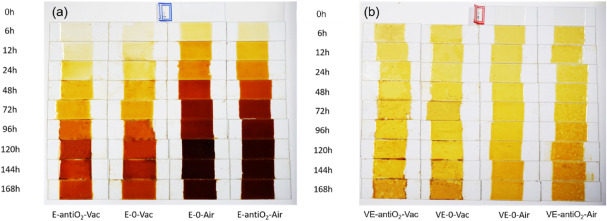UV aging vs. thermal aging in adhesives
Understanding UV Aging vs. Thermal Aging in Adhesives A Crucial Laboratory Service for Businesses
In the world of adhesives, ensuring the longevity and reliability of bonding agents is paramount. Whether youre a manufacturer, supplier, or end-user, understanding how your adhesive withstands various environmental conditions is crucial for maintaining product quality and customer satisfaction. Among the numerous laboratory services available, UV aging and thermal aging in adhesives stand out as critical testing methods.
What are UV Aging and Thermal Aging in Adhesives?
UV (ultraviolet) aging and thermal aging are two distinct laboratory testing procedures used to evaluate an adhesives performance under real-world conditions. These services simulate the effects of time, temperature, and light exposure on adhesives, providing a comprehensive understanding of their long-term durability.
Why is UV Aging vs. Thermal Aging in Adhesives Essential for Businesses?
Incorporating UV aging and thermal aging into your quality control process offers numerous benefits that can significantly impact your businesss bottom line
Enhanced Product Reliability By simulating real-world environmental conditions, you can ensure your adhesive meets the required standards of performance.
Reduced Warranty Claims Minimize customer complaints and warranty claims by demonstrating your products durability and reliability.
Improved Quality Control Develop a robust quality control process that helps you identify potential issues before they reach the market.
The Advantages of UV Aging vs. Thermal Aging in Adhesives
UV Aging Benefits
Accelerated Testing UV aging simulates up to 10 years of natural aging in just weeks, saving time and resources.
Wide Range of Applications Suitable for a variety of adhesives, including acrylics, silicones, and polyurethanes.
Cost-Effective Reduces the need for costly re-testing and re-work.
Thermal Aging Benefits
Realistic Testing Conditions Simulates real-world temperature fluctuations to assess an adhesives thermal resistance.
Increased Accuracy Provides a more accurate representation of an adhesives performance over time.
Improved Material Selection Helps you choose the right material for your specific application.
Frequently Asked Questions
Q What is the difference between UV aging and thermal aging?
A UV aging simulates exposure to light and heat, while thermal aging focuses solely on temperature fluctuations.
Q Which method is more effective?
A Both methods have their strengths, and the choice depends on your specific application. Some adhesives may be more susceptible to light degradation (UV) or temperature changes (thermal).
Q Can I conduct these tests in-house?
A While its possible to perform basic testing in-house, specialized equipment and expertise are often required for accurate results.
Conclusion
Investing in UV aging and thermal aging services from a reputable laboratory like Eurolab can revolutionize your adhesive testing process. By adopting these methods, youll be able to
Improve Product Quality Ensure your adhesives meet the required standards of performance.
Enhance Customer Satisfaction Reduce warranty claims and customer complaints.
Stay Ahead of Competitors Develop a robust quality control process that sets your business apart.
Dont compromise on adhesive reliability choose Eurolab for accurate, efficient, and cost-effective testing solutions.




